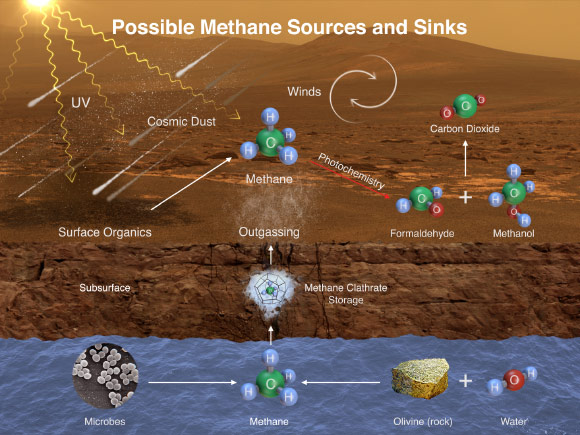
- The Curiosity team used the Tunable Laser Spectrometer of the Sample Analysis at Mars (SAM) instrument suite on the rover dozens times in a two-year period to sniff methane in the Martian atmosphere. During two of those months, in late 2013 and early 2014, four measurements averaged seven parts per billion; before and after that, readings averaged only one-tenth that level
- Dr Sushil Atreya of the University of Michigan says “This temporary increase in methane tells us there must be some relatively localized source. There are many possible sources, biological or non-biological, such as interaction of water and rock”
- Curiosity’s findings do not reveal whether Mars has ever harbored living microbes, but they do shed light on a chemically active modern Mars and on suitable conditions for life in the past